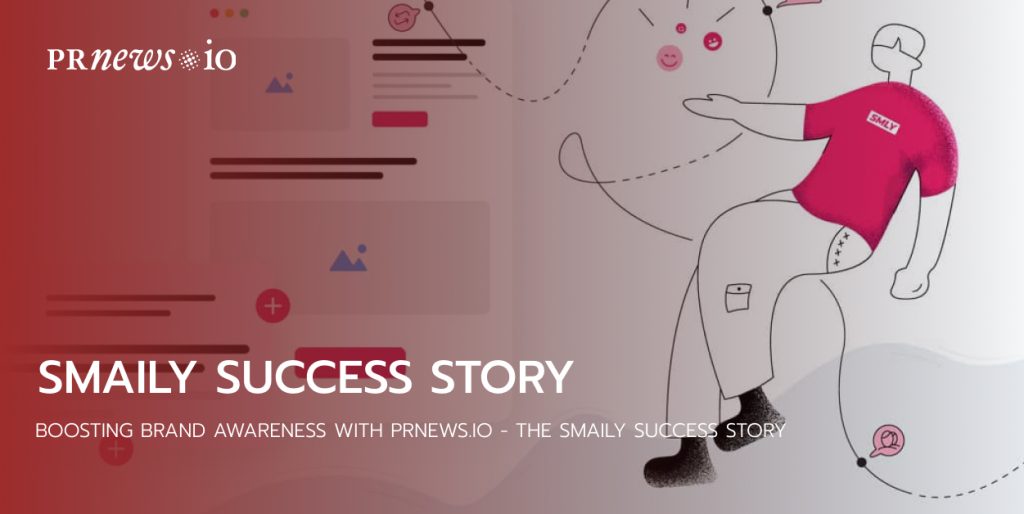The digital landscape constantly evolves. With the release and growing adoption of AI bots like ChatGPT, online search has changed, never to come back to its roots. In the context of online search, Answer Engine Optimization (AEO) has brought about strategic changes for businesses and end-users alike.
Today, you can get more accurate results for your search requests quickly. There is no need to coin complicated formulas to find the necessary information. Unlike traditional SEO, which aims to drive traffic to a website by letting users click a link to find the needed information, AEO displays relevant answers directly in SERP. As a business owner, you may wonder, “What’s the purpose of optimizing your content for AEO?” By providing users with quick answers, you can position your brand as an authoritative source of information, which is incredibly useful in the modern digital realm.
Answer Engine Optimization has modified the way content marketers create content. What are the primary techniques and approaches for you to follow to optimize content for AEO? Let’s explore.
What is AEO?
Answer Engine Optimization (AEO) is a part of Search Engine Optimization (SEO), where content marketers create content that directly answers searchers’ specific questions. AEO uses structured data and natural language processing to understand user queries and provide quick responses. Creating content for Answer Engine Optimization requires a deep understanding of how search engines work and how to craft texts that align with the criteria of search algorithms.
Optimizing content for AEO involves running keyword research focused on search queries relevant to your niche. This is followed by creating content using the keyword findings and providing answers to the users’ requests in clear language.
How to get your content featured in answer boxes or voice search results? As a rule, it involves adding FAQ sections to your blog posts or website pages, adding optimized headings and sub-headings to your texts, and using schema markup.
Answer Engine Types
Before providing practical tips on optimizing your content for Answer Engine Optimization (AEO), let’s start with the basics. Are you aware of the two major types of answer engines available and widely used on the modern web? Let’s explore.
| Category | Bot Name | Functionality | Key Features | Use Cases |
| Generative AI Bots | ChatGPT | Employs advanced AI to generate human-like text responses to prompts or questions. | Engages in conversational dialogue;Writes essays, poems, and more;Provides answers across diverse topics. | Education, customer service, and content creation |
| Gemini | Utilizes powerful AI to produce natural text and voice content from various sources. | Converses and interacts with users;Creates articles, reviews, and more;Delivers information and insights across domains. | Journalism, marketing, research | |
| AI Voice Search Assistants | Siri | Voice-activated assistant designed to answer questions, make recommendations, and perform actions. | Integrated into Apple devices;Handles tasks like setting reminders, sending messages, and providing directions. | Daily tasks, information retrieval, smart home control |
| Alexa | Cloud-based voice service available on Amazon Echo and other smart devices. | Plays music, provides news updates, and controls smart home devices;Supports third-party skills for extended functionalities. | Home automation, entertainment, shopping assistance | |
| Google Assistant | AI assistant that engages in two-way conversations. | Available on Android and iOS devices, smart speakers, and smart displays;Manages schedules and controls smart home gadgets. | Personal assistance, smart home interaction, and real-time translations |
Each type of answer engine has its strengths and use cases. While AI bots work best at providing detailed answers to users’ queries, AI voice search is a better and more convenient way to access information via voice commands.
How to Optimize Content for AEO
Optimizing content for Answer Engine Optimization (AEO) involves more than adding keywords. It demands a strategic method for creating and organizing content to address user questions and be easily understandable by search engines. Here are the essential tactics for optimizing your content for AEO.
To optimize content for AEO, it’s crucial to structure information clearly and logically. This means organizing the content to address users’ queries upfront, followed by detailed explanations or related information. Headings, subheadings, and lists can help break down the information for search engines.
Headings should indicate the following content using relevant keywords that users might search for. Lists are effective for presenting information succinctly in step-by-step guides or feature lists. Including a FAQ section directly addresses common queries on your website or within your content.
Schema markup is powerful as it helps search engines understand the context and structure of your content. Tagging your content with appropriate schema increases the chances of being displayed in rich snippets or voice search results.
Different types of schema markup, such as FAQ Page, How-To, or Articles, can be applied depending on your content type. Tools like Google’s Structured Data Markup Helper simplify adding schema markup to enhance readability and user engagement during AEO optimization.
How to Integrate AEO with Your SEO Strategy
While AEO can significantly enhance your online presence, it is most effective when integrated with a broader SEO strategy. This comprehensive approach ensures that your content addresses specific queries and ranks well for more general search terms, driving increased traffic to your site and bolstering your brand’s authority.
To successfully merge AEO with your overall SEO strategy, it is essential to align their objectives. This involves ensuring your content serves dual purposes: directly answering specific user queries and providing in-depth information supporting broader search inquiries. Balancing these objectives requires a nuanced understanding of your audience’s needs and search behavior.
Creating content that is both comprehensive and specific is crucial; covering broad topics in detail while also addressing specific questions within those topics will help achieve this balance. It’s important to incorporate question-based keywords for AEO and broader keywords for SEO into the content, ensuring optimization for a wide range of search queries.
Technical SEO enhancements ensure the content remains discoverable and ranks well in search engines. Improving site speed, mobile optimization, and structured data markup supports SEO efforts and enhances AEO performance by making the content more accessible to search engines.
Mobile optimization should be prioritized, as voice searches often come from mobile users. Additionally, structured data helps highlight key information within the contents, making it easier for them to be featured on rich snippets or answer boxes on SERPs (Search Engine Results Pages).
Acquiring backlinks from reputable websites boosts authority, which is essential for both SEO and AEO visibility. High-quality, authoritative content attracts links from other sites, further enhancing visibility.
AEO Techniques
To keep up with the modern digital landscape, businesses should follow the global trend and adopt AEO techniques in their SEO strategies to boost their content. The AEO techniques go beyond basic content optimization for SEO. Instead, they include AI, machine learning, and semantic search technologies to ensure the content answers relevant search requests. Let’s consider the major AEO techniques in detail.
AI and Machine Learning
Artificial Intelligence (AI) and machine learning fundamentally transform search engines’ comprehension and processing of user queries. By integrating AI-driven insights into your content strategy, you can accurately anticipate user intent and customize your content accordingly. This entails examining search trends, user behavior, and language patterns to develop content that resonates with how users search and what they seek.
- Employ AI-powered tools to evaluate the relevance and performance of your content, identifying areas that require enhancement.
- Harness machine learning algorithms to unveil emerging trends and user queries, enabling you to create proactive content that caters to future user needs.
Semantic Relevance
Semantic search goes beyond simple keyword matching, focusing on understanding the context and intent behind user queries. To enhance the semantic relevance of your content, it’s important to use related terms, synonyms, and contextually relevant phrases that help search engines grasp the broader topic of your content and its connection to specific queries.One effective strategy is organizing your content into topic clusters covering a broad subject area. This involves linking related content together to establish topical authority. Additionally, incorporating contextual keywords and phrases that are semantically related to your main topic can significantly improve the depth and relevance of your content.
Voice Search Optimization
With the increasing popularity of digital assistants and smart speakers, optimizing for voice search has become an essential part of AEO. Voice searches typically involve longer, more conversational queries in the form of questions. This necessitates a distinct approach to content creation and optimization.
To effectively optimize for voice search, it’s essential to use natural, conversational language that aligns with how people speak when using voice search. Additionally, structuring your content to address common questions asked through voice search using clear and concise language is crucial.
These strategies are vital in ensuring that your content is well-suited for voice search optimization within the realm of AEO.
What Does the Future Hold for AEO?
The future of Answer Engine Optimization (AEO) is dynamic, with ongoing trends and technologies shaping content creation, optimization, and consumption. Businesses and content creators must stay ahead of these developments to maintain a solid online presence. Here are some upcoming AEO trends expected to impact strategies moving forward.
Increased Use of AI and Machine Learning
AI and machine learning will be increasingly important in how search engines comprehend and handle user queries. This is expected to result in more personalized and precise responses, prompting content creators to adjust their AEO strategies accordingly. Embrace AI tools for content creation and optimization to ensure that your content stays pertinent and aligned with the evolving nature of search engines.
More Focus on Voice Search
As smart devices become increasingly common, the prevalence of voice search is expected to increase, altering how individuals engage with search engines. This shift will necessitate producing more conversational content that directly addresses spoken inquiries. It is essential to concentrate on generating content that provides solutions naturally and conversationally while anticipating the kinds of questions users are likely to articulate.
Visual and Video Search Boost
The significance of visual and video content in search is growing, with platforms such as Google Lens enabling users to conduct searches using images. This trend is anticipated to expand, integrating additional visual and video content into search results. It is advisable to incorporate more visual and video content into your strategy while optimizing it with descriptive tags and structured data to enhance its searchability.
Focus on UX and User Satisfaction
Ensuring your content effectively addresses user queries is crucial. In addition, prioritizing an excellent user experience with fast loading times, mobile optimization, and engaging high-quality content is imperative for ranking and featuring by search engines.
Conclusion
Answer Engine Optimization (AEO) signifies a significant shift in digital marketing, highlighting the importance of directly addressing user queries. It goes beyond traditional SEO by focusing on visibility and positioning your website as the authoritative source of information. By aligning content with specific user questions, implementing structured data for clarity, and understanding user intent nuances, AEO facilitates a more precise connection between your offerings and users’ needs.
This strategic approach improves user experience and enhances your website’s relevance and authority in a competitive digital landscape. Embracing AEO is crucial for businesses that meet modern consumer expectations for instant, accurate information. Moving forward, AEO will undoubtedly play a crucial role in defining success in online searchability and engagement.
Is your business in need of a PR makeover?
- Benefit from media coverage assistance.
- Witness a refined branding approach.
- Watch as your recognition soars.





